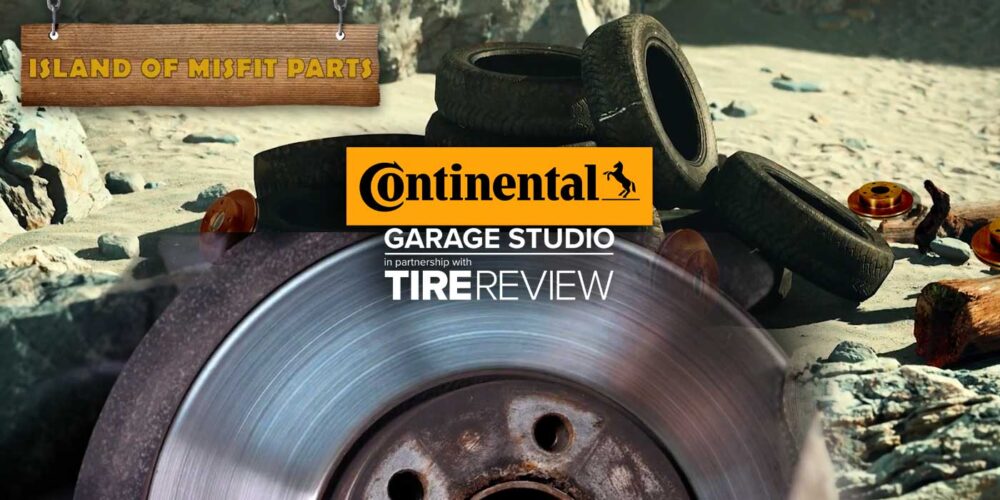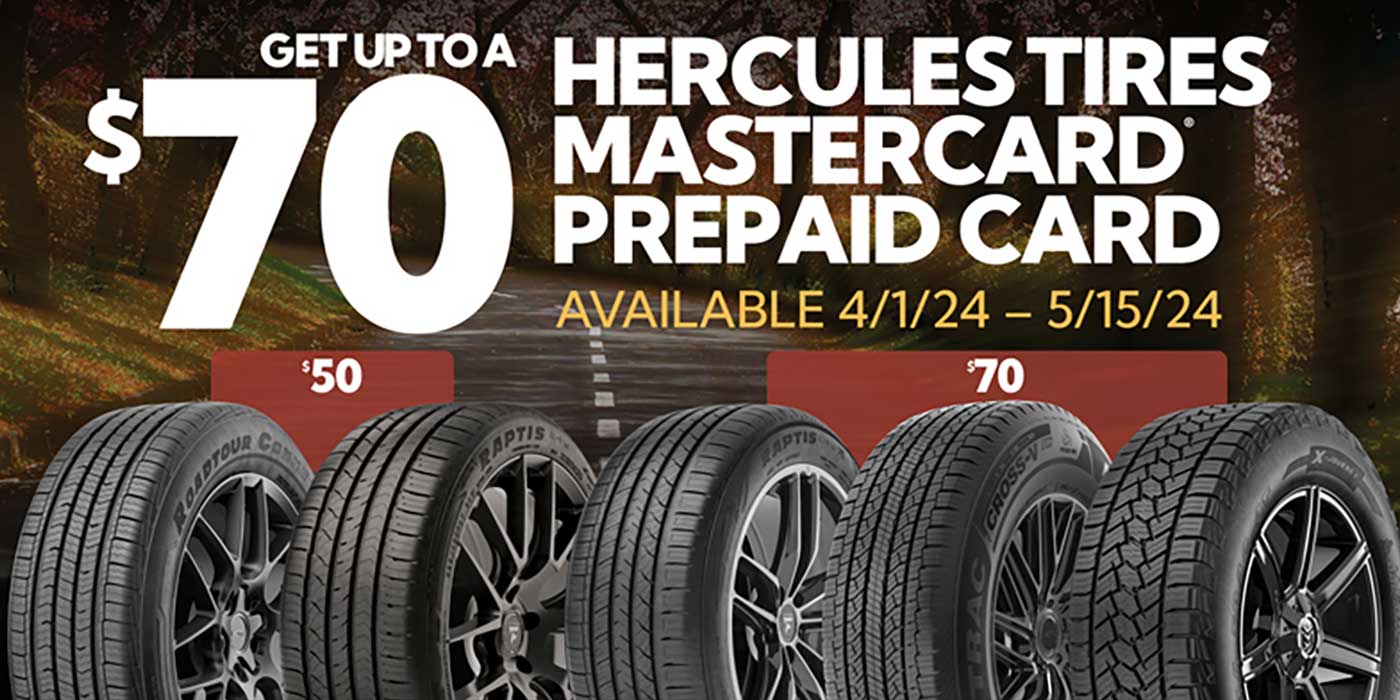This is the continuation of a blog entry posted Wednesday. To read the first section, “The Grand History and Evolution of UTQG – Part I,” click here. Below is the report published in the June 1978 issue of Tire Review.
The Prelude
Nearly 12 years have elapsed since Congress passed a law requiring the establishment of Uniform Tire Quality Grading standards. The standards still do not exist, though thousands of man-hours and an estimated $30 million have been spent by government agencies and the tire industry.
What happened and why are described in The Uniform Tire Quality Grading System: A Case Study of the Government Regulatory Process, released last month by the National Center for Productivity and Quality of Working Life, a Federal agency created by Congress in 1975.
The report, which cost the center around $40,000, is so revealing, and so fascinating, that Tire Review this month devotes an unprecedented 18 pages to it – after we edited and digested its original 56 single-spaced typewritten pages.
“Tire quality grading was selected for the study," says George H. Kuper, executive director of the Center, "because it represents an apparent failure of regulation to come to grips with what was perceived to be an important consumer problem, but which could not, after all, be resolved by federal regulation."
Referring to the National Motor Vehicle Safety Act of 1966, he notes that it called for the establishment of both "quality" and "safety" standards for automobile tires.
"The different outcomes in the safety and the quality grading components are perhaps the most important issues revealed by the study," Kuper said.
"Unsafe tires cause injury and death. Failure to take action would have been socially unacceptable." (Thus the safety issue was resolved within two years.)
"Yet," Kuper says, "the same process and the same participants – government and the tire industry – failed to resolve the tire quality grading issue.
"Perhaps this indicates that federal regulation works well when it is needed, but that the system breaks down when it is asked to treat issues unworthy of Federal regulation and industry effort.”
The grading issue, as the National Center of Productivity’s study notes, has a history of bitter contention among government agencies, the tire industry and public interest groups.
The Center’s conclusion, “There is no evidence that this regulation is better for the consumer than no regulation at all.”
The National Center for Productivity and Quality of Working Life is charged with identifying those regulations, which adversely affect our Nation’s rate of productivity growth. This study was undertaken as an attempt to trace the complex interaction of government, industry, public interest groups, consumers and the legal system in resolving a particular set of problems concerning automobile tires.
We feel some important questions have been raised, the center said, but we have no desire to isolate “blame.”
The Story
Two distinct problems concerning tires were raised before Congress at the same time (1964). One was the safety of tires; the other the ability of consumers to compare the quality of tires. By 1968 the tire safety problem was resolved. Nearly 10 years later, the quality comparison problem remains.
Involved are precisely the same mix of participants. Together they undertook a set of private and public actions to effectively resolve one problem; they have bitterly and continually fought each other on the second.
The difference rests in the inherent nature of the two problems.
Safety is a real problem; unsafe tires cause death and injury. Our system (government, manufacturers, consumers) can readily and willingly perceive the responsibility (of) safe tires.
The quality problem is inherently very different. What is "quality"? Do we desire the government or any other institution to determine what represents "quality"?
Throughout the history of this effort, there clearly were times when it would have been advantageous to stop and reconsider the original legislation which initiated it. But nothing in our current system motivates or rewards such an action and, in the face of compelling evidence that perhaps a better method of intervention could be devised, we continue to spin wheels.
We are also impressed with the results of a safety regulation based on performance. The government did not attempt to regulate how tires were to be manufactured to insure their safety. It required, instead, that they meet minimum safety standards subject to testing for compliance.
The Long Saga
The long saga of the attempt by the federal government to help the American consumer buy tires more intelligently began in January 1964, when the Senate Subcommittee on Retailing, Distribution and Marketing Practices reported on the automobile tire industry. Its report concluded:
"A system whereby tires are rated according to government standards of safety, endurance, general quality and construction, such as is done in the meat industry, would let the consumer know exactly what he is buying."
Despite enactment of the Safety Act of 1966, which required that a tire quality grading system go into effect no later than Sept. 9,1969, there is today still no such system.
Since the beginning of this process, three closely related but distinguishable issues have become confusingly intermingled:
• Do passenger automobile tires meet a minimum level of safe performance?
• Is tire advertising deceptive or misleading with regard to safety, quality or other factors such as warranties, sales techniques and consumer credit?
• Does the consumer have adequate information to judge comparative safety or comparative quality of tires?
The tire safety standards and labeling requirements, together with a number of Federal Trade Commission actions addressed the first two points above. The purpose of tire quality grading was to address the third.
An important philosophical question, which this report does not directly address, underlies this regulatory issue. The question is the appropriate role of the Federal government in attempting to define the quality of a product and to compel private industry to grade quality as a means of improving consumer information.
Many would agree upon a government role in assuring a safe product (though argument intensifies around how and at what cost).
There is no ready precedent to quality grading. The often-cited example of meat grading really grades product composition (i.e., fat content) which, although taken by some as a surrogate for quality, does not reach the final quality dimensions (such as taste).
The tire quality issue is fundamentally different and more complex and attempts to grade quality on generalized "output" characteristics such as treadwear, traction, temperature resistance, etc.
Whether the tire purchase decision (as compared to the decision to buy other consumer products) is a special example of market failure, the necessity of government intervention is a basic question this report does not address.
The report attempts to present the facts and issues fairly and does not attempt to assess blame for what has obviously been a classic case of how not to regulate. (Although this report has attempted to present the case neutrally, we were hampered to some degree by NHTSA’s unwillingness to cooperate with the study team, due to their interpretations of the constraints of the Administrative Procedures Act.)
There is sufficient blame for everybody to share:
Congress, enacted the provision with no in-depth information as to its practicality, utility or effects, then failed to exercise its oversight responsibility either to amend the law or to ensure that it was implemented;
The agencies (National Bureau of Standards, National Highway Safety Bureau and National Highway Traffic Safety Administration) spent a period from Fall 1966 to Fall 1972 in a series of interagency squabbles, technical studies, proposals, proposal withdrawals and general delays;
The Executive Branch (Department of Transportation, White House, Office of Management and Budget), which had responsibility to either carry out the law or quickly attempt to amend it;
Consumer groups, one of which commissioned the Heitzman Report, which contributed greatly to the initial legislative confusion. Consumer groups never brought forth any meaningful analytical data about the tire purchasing decision, apparently promoting tire quality grading at whatever cost as an act of faith; the various groups watched six years of inactivity before forcing the issue to the courts;
The courts, which entered late into the grading controversy, and
The tire manufacturers, who attempted to work with the government in early years of the controversy.
There are in fact significant if not overwhelming technical difficulties in developing a tire quality rating system; but at least since 1973 when court action began, and possibly since 1966, the companies have applied maximum effort to delay the standards and to simplify or reduce their effects.
Current Status
After the expenditure of 13 years and at least $20 million, there is now a system almost ready which will grade three properties:
• Treadwear (from 60 to 200 points, representing average wear from 18,000 to 60,000 miles)
• Traction (0, 1 or 2 stars, based on traction for a 40 mph stop)
• High speed temperature resistance (A, B or C, with C for keeping shape at 85 mph, B for 100 mph and A for 115 mph).
The system will probably cost (public and private costs) between $150 million and $200 million per year and add between $0.75 and $1 to the price of each tire. (The NHTSA cost estimate of $46 million is for industry costs alone and appears to understate total costs considerably.)
However, extreme controversy surrounds both the treadwear test (where NHTSA recently conceded a major technical point and delayed implementation for radial tires) and the traction test (where test reproducibility, generality of the wet surface straight-ahead test, and utility at speeds other than 40 mph are still questions).
As for the third test, the relevance of testing at 85 mph, 100 mph, and 115 mph in the age of the 55 mph speed limit and existing tire safety standards is not apparent.
In fact, consumers are switching to radial tires in ever-increasing numbers – tires which will probably tend to score both very high and very close together on the treadwear tests.
Data on whether the new standards will affect the purchase decision in important ways – or be largely ignored, like the Automobile Information Standards – will have to await further evaluation.
Consumer Research magazine wrote in 1976, "If and when the program goes into effect, it may not provide enough clear and usable information to compensate for its costs, which will be many millions of dollars, and must inevitably be passed on to the tire customer and the taxpayer. "
Conclusions
What conclusions can be drawn about the government regulatory process from the history of tire quality gradings?
Need for better legislative support work (a great deal of information on costs, utility and effects of quality grading should have been gathered before legislating the provision).
Need for analysis. Besides the lack of knowledge about the needs of consumers, we find no careful economic analysis of the direct costs or benefits of the proposed system; no analysis of the secondary effects – competitive effect on smaller manufacturers, effect on tire prices, costs to test industry compliance, and so forth; and no clear justification for why these final three properties were chosen (as opposed to other important qualities) or what other qualities may be sacrificed if manufacturers design to comply with these three characteristics.
Tire Characteristics
A passenger car tire is an extremely complex product, made from three basic materials – rubber, fabric and metal. They come in at least three ply constructions, 10 basic sizes, three rim diameters, five aspect ratios, two tread types and three or more load ranges.
Today’s consumers are faced with more than 1,300 different lines, brands and sizes of tires in the United States alone.
There are three basic types of tires in use today – bias-ply, belted bias-ply and radial-ply. The bias-ply is built with four, or sometimes two, layers of fabric laid diagonally across the tire from bead to bead. It has been a standard tire construction for years.
The design of the bias-ply provides rigidity in the sidewall and tread. The tradeoff, however, is that bias-ply tires tend to squirm more as the tires rolls under load, and the tire tends to run hotter.
The bias-belted tire, introduced in the U.S. in 1967, is similar to the bias-ply, with the addition of two or more layers of fabric (circumferential belts) around the carcass under the tread. Bias-belted tires squirm less than bias and tend to run cooler and have a longer tread life.
The radial features body cords, which run across the tire face, perpendicular to the center line of the tire. They, too, are constructed with circumferential belts, but at a low angle, and act to restrict the 90-degree carcass plies. The radial tire is characterized by more flexible sidewalls than the bias-ply tires, and tend even when fully inflated to appear under-inflated.
Certain properties of a particular tire, which make it more desirable from one vantage point are disadvantageous when other needs are considered. The radial (is) preferable in terms of high speed ride, low-heat generation, cornering performance and tread wear; the bias-ply carcass is superior in sidewall strength, sidewall penetration resistance, high-speed performance and low-speed ride.
Tradeoffs
There are also tradeoffs inherent in the actual components of the tire. As a simplified example, certain rubber compounds offer superior tread life, others have a shorter predicted wear but are more effective in resisting skids.
In addition, each of the popularly used fabrics – nylon, rayon and polyester – has a different balance of properties. Nylon is strong and resists heat; rayon has a smoother, quieter ride; polyester has good strength, is insensitive to water.
Each of the materials used in belts also offers unique properties. Rayon has good strength properties and is relatively inexpensive, glass fibers have good tensile strength and dimensional stability and provide long wear; steel wire is extremely strong, stretch resistant, nearly distortion free and gives long wear; Aramid is strongest on a weight basis, has stretch resistance and is flexible for improved riding comfort, but is more costly.
Thus, not only does the consumer need to know the properties of an individual tire which he is considering, but also, given the tradeoffs, those characteristics which he values most.
Manufacture
The manufacture of motor vehicle tires is a complex process, which involves a lot of hand labor not apparent to the consumer. After all the components of the tire (plies, tread, beads, sidewalls) are prepared by mechanical means, they are brought together for hand assembly by a skilled operator on a tire-building machine.
This procedure is followed by curing. Intense heat and pressure are applied (to) change the compounded rubber into a highly elastic material and bond the parts of the tire into one unit.
Rationale
When Sen. Hubert Humphrey’s Subcommittee on Retailing, Distribution and Marketing Practices issued its 1964 report on the automobile tire industry, it recommended the introduction of a tire quality rating system, stating that "the currently used complex method of naming different brands or lines of tires is misleading and confusing to the public." No specific guidelines were given as to the form the system should take or the testing methodology, which should be employed. Instead, the aforementioned reference to the meat industry.
One principal impetus for the legislation creating a tire grading system was the perception that standard merchandising and advertising practices did not provide the consumer with sufficient information on the relative merits of different brands of tires. Indeed, it was claimed by advocates of the grading system that advertising was confusing and misleading.
In addition and perhaps more importantly, the legislation was motivated by prevailing concern regarding the safety of automobile tires.
The safety issue arose primarily from the experience of new car owners in the early 60s, from whom members of Congress heard frequent complaints about tire failures on their recently purchased automobiles. (While the principal safety concerns were with OE tires, in 1966 – as well as today – OE made up less than one-third of the market for passenger tires.
Rubber manufacturers today acknowledge that a common practice of the auto industry at that time was to overload the tires on a car; that is, car manufacturers would purchase a smaller, cheaper tire for OE than should be used to support the car, increasing the probability of a tire blow-out.
Observers disagree as to the primary reason for this practice; several sources claim it was done to cut costs, others say it was predominantly to provide a smoother, more comfortable ride. Both factors were no doubt involved.
The practice had essentially ceased by late 1965 with the introduction of 1966 model cars, due to pressure by the public and tire manufacturers on the auto industry, and to the recognition of the problem and its serious consequences by the auto manufacturers.
The outcry in the mid-1960s was the beginning of events leading to the enactment of the tire provisions of the Safety Act of 1966.
Both the concern with misleading advertising and the fears of the safety of tires led to the inclusion of a one paragraph amendment by Sen. Gaylord Nelson in S. 2669 – the only reference in the 34 pages of the National Traffic and Motor Vehicle Safety Act to a Uniform Tire Quality Grading System (UTQG).
That one paragraph has in turn led to 11 years of activity in the Commerce Department, the Department of Transportation, the Rubber Manufacturers Association and the U.S. Courts. In fact, the provision in the act for quality grading is the only non-discretionary standard in the entire act.
While the Secretary was authorized to promulgate motor vehicle safety standards, he was required by a certain date to publish tire quality grading standards.
Thus, although any other tire or motor vehicle standard published as a Federal regulation under the 1966 Act could be revoked without Congressional action, withdrawal of the tire quality grading standard would require specific legislation.
It is generally acknowledged that this distinction reflects neither deliberate Congressional intent regarding quality grading, nor a conscious decision that quality was more important than safety, but merely the last-minute nature of the insertion of the provision.
Evolution
It is important to trace the concurrent development of safety standards and controls over deceptive advertising. These regulations are presented in chronological order as they developed.
On Jan. 1, 1965, the Rubber Manufacturers Association voluntarily adopted a set of minimum safety standards for motor vehicle tires. Under them, tires were measured for carcass strength, endurance under varying loads and performance at varying high-rage speeds. Minimum dimensions for each size tire were also established.
An FTC Tire Advertising and Labeling Guide was adopted July 5, 1966, requiring manufacturers to disclose either in a permanent manner on the outside of the tire "or in easily accessible display materials" the following information:
• brand name and manufacturer’s code number,
• size of tire,
• whether tube type or tubeless,
• number of plies,
• name of cord material in ply,
• maximum load carrying capacity,
•a table showing load capacity within a range of various inflation pressures, and
• maximum permissible inflation pressure.
The Motor Vehicle Safety Act of 1966 also required promulgation of two Federal tire standards – 109, essentially an extension of the industry’s voluntary standards from 1965; and 110, requiring automobile manufacturers to equip all new cars with adequate tires to prevent overloading.
On Jan. 26,1971, Part 574 of Title 49, Code of Federal Regulations was adopted, setting forth the method by which purchasers of defective or non-conforming tires could be notified of recalls.
Advertising is regulated by the FTC Guidelines mentioned previously. Tire producers are prohibited from using designations or product grades, which may deceive purchasers into believing that such products are equal or superior to a better grade of product.
No warranties from manufacturers are required by FTC rules, but FTC does have the responsibility to regulate all warranties. Until recently, the major tire manufacturers provided the consumer with any of three warranties.
The first is a warranty of workmanship and material which usually provides a pro rata replacement. The second is a road-hazard guarantee (presently being discontinued by most major manufacturers). The third is concerned with the useful life of the tire. This is also currently disappearing.
Although the consumer now has an assurance of a minimum level of tire safety, and although FTC regulations and tire industry responses have partially addressed the problem of deceptive designation in advertising, the consumer in 1977 still has no uniform means for comparing tire quality.
The Buying Decision
Let’s look for a moment at the new replacement tire purchase decision, which is essentially also the primary purchase decision because, except in the grossest sense, expected tire quality will not affect a new car purchase.
Advertising samples from 1966 illustrate that price and tread life were the properties most stressed in advertising (any size four-ply nylon tubeless, for example, at $10).
The consumer wishing to purchase a tire today has substantially more information available than in 1966 – but the purchase decision is so complex that much of this information is either seldom used or of doubtful value.
The public, in general, is aware that there are three broad categories of tires – bias, belted bias and radial. This information provides consumers with a very broad sense of the hierarchy of "quality" in tires. While no blanket statement holds, it is typically felt that radials, for example, are "better" tires in terms of expected tread life.
Even Consumer Reports, however, which has in the past established ratings of replacement tires, has been reluctant to endorse a single product across the board, instead stating that:
"CU’s test results show that you can’t consistently count on any single type of tire or material to give better performance than another, and that you can’t judge the real cost of tires by the selling price. But the test results also hint that you run a fairly good chance of getting a high-quality tire when you buy a radial. (August 1968).
The major tire manufacturers typically grant with the purchase of a passenger tire a "limited treadwear warranty." This warranty does not ensure that a particular tire will last a specified number of miles. It does, however, provide a general basis for ranking the expected lives of tires.
The purchaser should be aware, of course, that two comparable brands of tires may have warranties which vary a great deal because of company policy of the level of risk-aversion of the dealer.
If the potential purchaser were to focus first on one particular manufacturer, for example Goodyear, he would still be faced with 23 lines of passenger tires from which to choose. The following tires are available:
• Nine radial
• Two radial snow
• Four belted-bias
• Two belted-bias snow
• Five bias ply
• One bias ply snow
Entering into the consumer’s selection of a particular line would be the following decisions:
• whether or not to purchase a snow tire;
• the mileage warranty accompanying each line;
• tubeless or tubed;
• the number of plies in each line;
• the number of belts in each line;
• the price of the tire;
• the composition of the tires in each line;
• load range of tire;
• the size of the tire required by the car.
There are 53 different tire sizes or designations of bias-ply or bias-belted tires and 47 sizes of radial tires. The size of the tire required for a particular vehicle narrows somewhat the range of lines available for selection. Once a particular tire is selected based on the criteria above, the consumer has additional choices, such as whether he wants blackwall or whitewall tires.
This scenario is greatly simplified by the initial assumption that the consumer has already decided on a particular manufacturer and dealer. There are some 17 manufacturers of tires in the United States and thousands of dealers.
Ms. Miller of ICS Inc. (Washington, D.C.-based consulting contractors responsible for the research represented in this study) visited several local tire dealers to test the tire purchase decision.
The advice from one of the salesman, "Buy an established brand from a dealer you trust and feel comfortable with," well summarized the course of action, which is taken by most consumers.
When dealers were pressed for information on the properties of particular tires, without exception they stressed their own "experience" with the tire and cited the manufacturer’s tread life warranty. She found it very difficult within any one particular store to shop around for the best purchase, as the salesman invariably promoted one certain tire and then discussed only the attributes of that tire.
When one dealer was asked whether there was any material available for comparison of the various tires, he replied, "Believe me, all the charts you could find would only confuse you; they even confuse us."
The Legislation
The first bill to actually suggest establishment of quality grading was introduced by Sen. Gaylord Nelson of Wisconsin in 1964. However, two years later when the Motor Vehicle Safety Bill came to the floor of the Senate, there was no provision for quality grading.
This was the result of a decision by the Senate Commerce Committee not to include grading in the safety bill. On the Senate floor, though, Sen. Nelson introduced an amendment requiring grading within two years.
According to several sources in the Senate, there was some misunderstanding as to the nature of the Nelson amendment. Senator Magnuson, committee chairman, is said to have misunderstood, taking the amendment to mean that a two-year feasibility study was being proposed. In fact, the amendment did not suggest a study, but required the grading system. It passed the Senate unanimously.
One factor in the rejection of the motion of a feasibility study was the work done by Edward J. Heitzman of Automobile Development Associates in Princeton, N.J., who in a report for Ralph Nader maintained that tire grading systems for the properties of load, temperature and speed endurance, cornering, braking ability and wet road behavior, were probably technically feasible and could be made available.
Congress never recognized the technical difficulties inherent in the attempt to establish a grading system. Sen. Nelson, instead, accepted the Heitzman report (commissioned by Ralph Nader) which suggested that a system could be established within a short time.
Two points should be noted about his report. First, Heitzman was interested only in developing a safety rating system and stated in a recent interview with ICF that his concern was "for the consumer’s neck, not his pocketbook."
As Heitzman said, the "ground rules" for tire grading have changed with the evolution of the properties to be graded and particularly with the introduction of tread life grading into the system. (Heitzman originally had recommended a numerical rating for load, pressure, heat tolerance, skid and cornering.)
Second, Heitzman admitted that while he testified that his system could be implemented within a year, he was naive in his estimation. Although the report was described by advocates of tire quality grading as an extensive analysis, Heitzman noted to ICF that he wrote the report in only three days.
Heitzman said he was "unaware" that the industry would have to test virtually all of their tires and that substantial practical problems would prevent early implementation of any system.
Congress, in mandating quality grading, believed that in 1966 the principal factors in the consumer’s selection of a tire were price, advertising image and the aggressiveness in the appearance of the tread design. There was clearly much confusion and misunderstanding in the nomenclature and advertising of tires. (Is a Goodyear "premium" superior to a Firestone "first line"?) No information was available to the consumer of the quantitative differences of performance characteristics of the tire.
Tire manufacturers objected to the Nelson bill, warning that simplification of a grading system would encourage manufacturers to conform by eliminating product differences and by sacrificing other desirable tire characteristics to maximize performance in tests.
As noted earlier, while arguments about the bill went on, several of the primary reasons for establishing such a system were being at least partially resolved in other forums. FTC issued its guidelines. RMA adopted safety standards designed, among other things, to eliminate the practice of overloading original equipment tires – the practice which had originally alerted Congress to the need for regulating the industry.
The National Traffic and Motor Vehicle Safety Act, with its provision ordering tire quality grading, was sign














